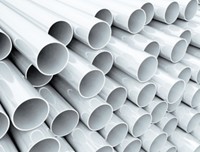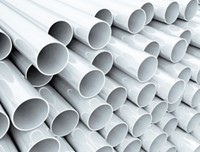Advertisement
Grab your lab coat. Let's get started
Welcome!
Welcome!
Create an account below to get 6 C&EN articles per month, receive newsletters and more - all free.
It seems this is your first time logging in online. Please enter the following information to continue.
As an ACS member you automatically get access to this site. All we need is few more details to create your reading experience.
Not you? Sign in with a different account.
Not you? Sign in with a different account.
ERROR 1
ERROR 1
ERROR 2
ERROR 2
ERROR 2
ERROR 2
ERROR 2
Password and Confirm password must match.
If you have an ACS member number, please enter it here so we can link this account to your membership. (optional)
ERROR 2
ACS values your privacy. By submitting your information, you are gaining access to C&EN and subscribing to our weekly newsletter. We use the information you provide to make your reading experience better, and we will never sell your data to third party members.
Business
Dow Chlorine Business Will Go To Olin
Restructuring: Deal caps Dow revamping, turns Olin into a new chemical leader
by Michael McCoy
April 2, 2015
| A version of this story appeared in
Volume 93, Issue 14

Making good on its promise to exit the chlor-alkali business, Dow Chemical has struck a $5.0 billion deal to sell most of its chlorine and derivatives assets to the chlorine and ammunition maker Olin Corp.
The deal will be transformational for Olin, catapulting it into the upper ranks of the U.S. chemical industry with about $7 billion per year in annual sales, up from the $2.2 billion it reported last year. For Dow, the divestment is a final step in a restructuring program that includes the recent sales of Angus Chemical and its sodium borohydride business.
That program took place under the watchful eye of Third Point, an activist investment firm that criticized Dow for trying to balance commodities and specialties within the same company. Dow and Third Point reached détente last December with a standstill agreement that will put two Third Point nominees on Dow’s board.
Alluding to the criticism, Dow CEO Andrew N. Liveris told stock analysts on a conference call that the sale proves “Dow continues to behave as our own best activist.” Indeed, analysts were generally favorable about the deal, which includes Dow’s U.S. Gulf Coast chlor-alkali and vinyl chloride operations, its chlorinated organics business, and its epoxy resins business.
At present, Dow is the world’s largest chlorine producer, whereas Olin is number five, according to a Dow presentation that accompanied the announcement. Although the deal doesn’t include Dow’s chlorine facilities in Australia, Brazil, and Germany, it will still make Olin the new global leader with almost 6 million metric tons per year of chlorine capacity. Olin expects to reap $200 million in cost savings by combining the two businesses.
Dow says the transaction will bring it $5.0 billion, including $2.0 billion in cash, about $2.2 billion in Olin stock, and $800 million of assumed pension and other liabilities. The deal is a so-called Reverse Morris Trust, a structure that allows it to be tax-free for Dow. After it is complete, expected by the end of the year, Dow shareholders will own about 50.5% of Olin stock.




Join the conversation
Contact the reporter
Submit a Letter to the Editor for publication
Engage with us on Twitter